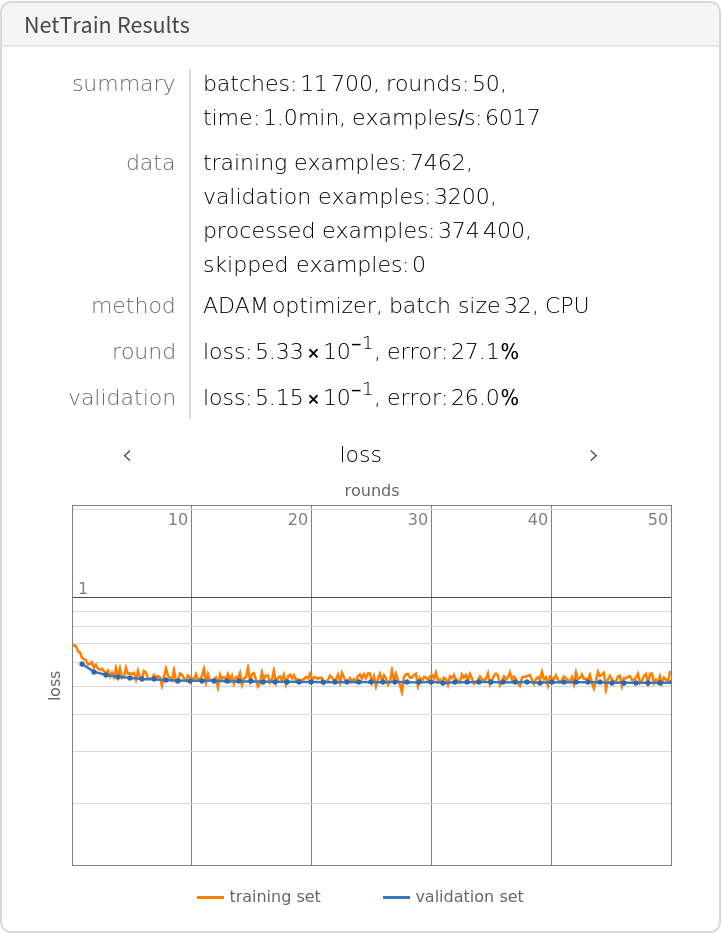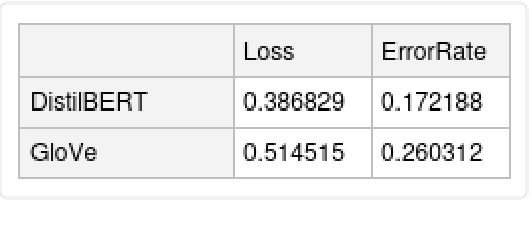Resource retrieval
Get the pre-trained net:
NetModel parameters
This model consists of a family of individual nets, each identified by a specific parameter combination. Inspect the available parameters:
Pick a non-default net by specifying the parameters:
Pick a non-default uninitialized net:
Basic usage
Given a piece of text, the DistilBERT net produces a sequence of feature vectors of size 768, which correspond to the sequence of input words or subwords:
Obtain dimensions of the embeddings:
Visualize the embeddings:
Transformer architecture
Each input text segment is first tokenized into words or subwords using a word-piece tokenizer and additional text normalization. Integer codes called token indices are generated from these tokens, together with additional segment indices:
For each input subword token, the encoder yields a pair of indices that correspond to the token index in the vocabulary, and the index of the sentence within the list of input sentences:
The list of tokens always starts with special token index 102, which corresponds to the classification index.
Also the special token index 103 is used as a separator between the different text segments. Each subword token is also assigned a positional index:
A lookup is done to map these indices to numeric vectors of size 768:
For each subword token, these three embeddings are combined by summing elements with ThreadingLayer:
The transformer architecture then processes the vectors using six structurally identical self-attention blocks stacked in a chain:
The key part of these blocks is the attention module comprising of 12 parallel self-attention transformations, also called “attention heads”:
BERT-like models use self-attention, where the embedding of a given subword depends on the full input text. The following figure compares self-attention (lower left) to other types of connectivity patterns that are popular in deep learning:
Sentence analogies
Define a sentence embedding that takes the last feature vector from DistilBERT subword embeddings (as an arbitrary choice):
Define a list of sentences in two broad categories (food and music):
Precompute the embeddings for a list of sentences:
Visualize the similarity between the sentences using the net as a feature extractor:
Train a classifier model with the subword embeddings
Get a text-processing dataset:
View a random sample of the dataset:
Precompute the DistilBERT vectors for the training and the validation datasets (if available, GPU is highly recommended):
Define a network to classify the sequences of subword embeddings, using a max-pooling strategy:
Train the network on the precomputed vectors from DistilBERT:
Check the classification error rate on the validation data:
Let’s compare the results with the performance of a classifier trained on context-independent word embeddings. Precompute the GloVe vectors for the training and the validation dataset:
Train the classifier on the precomputed GloVe vectors:
Compare the results obtained with GPT and with GloVe:
Net information
Inspect the number of parameters of all arrays in the net:
Obtain the total number of parameters:
Obtain the layer type counts:
Display the summary graphic:
Export to MXNet
Export the net into a format that can be opened in MXNet:
Export also creates a net.params file containing parameters:
Get the size of the parameter file:



![input = "Hello world! I am here";
embeddings = NetModel["DistilBERT Trained on BookCorpus and English Wikipedia \
Data"][input];](https://www.wolframcloud.com/obj/resourcesystem/images/6a3/6a390416-8cad-4884-8275-922180c519ee/3a869a94765b5d5e.png)

![net = NetModel[{"DistilBERT Trained on BookCorpus and English \
Wikipedia Data", "InputType" -> "ListOfStrings"}];
netencoder = NetExtract[net, "Input"]](https://www.wolframcloud.com/obj/resourcesystem/images/6a3/6a390416-8cad-4884-8275-922180c519ee/2d69eb78dba0172b.png)

![embeddings = net[{"Hello world!", "I am here"},
{NetPort[{"embedding", "embeddingpos", "Output"}],
NetPort[{"embedding", "embeddingwords", "Output"}]}];
Map[MatrixPlot, embeddings]](https://www.wolframcloud.com/obj/resourcesystem/images/6a3/6a390416-8cad-4884-8275-922180c519ee/7500e4a52c77e416.png)


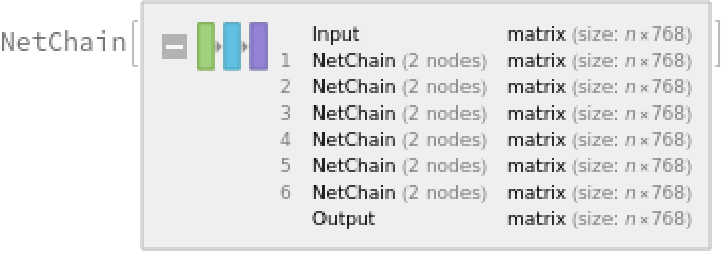
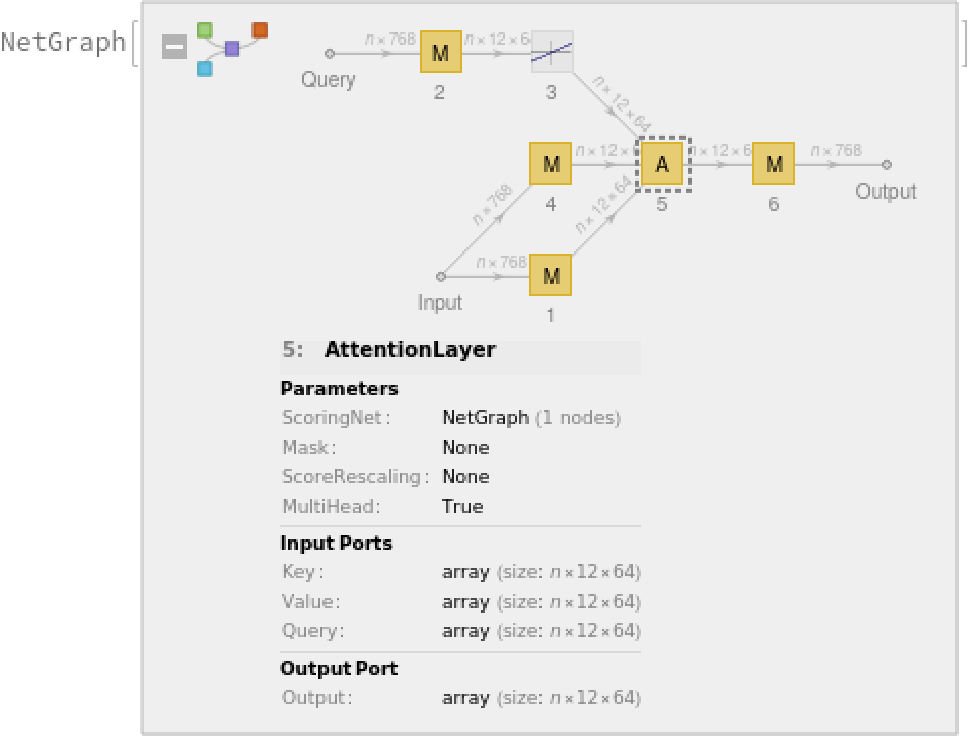
![sentenceembedding = NetAppend[
NetModel["DistilBERT Trained on BookCorpus and English Wikipedia \
Data"], "pooling" -> SequenceLastLayer[]]](https://www.wolframcloud.com/obj/resourcesystem/images/6a3/6a390416-8cad-4884-8275-922180c519ee/5150494b27d40f87.png)


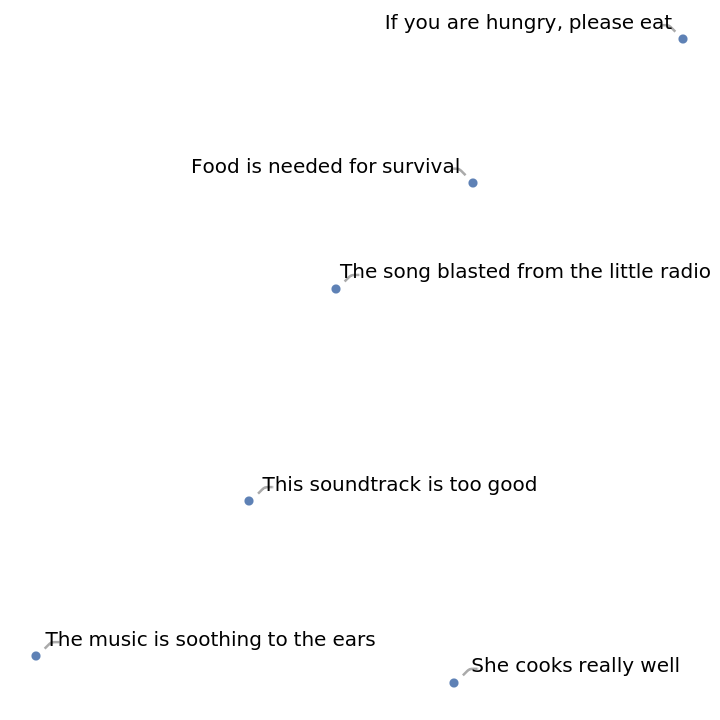
![trainembeddings = NetModel["DistilBERT Trained on BookCorpus and English Wikipedia \
Data"][train[[All, 1]], TargetDevice -> "GPU"] -> train[[All, 2]];
validembeddings = NetModel["DistilBERT Trained on BookCorpus and English Wikipedia \
Data"][valid[[All, 1]], TargetDevice -> "GPU"] -> valid[[All, 2]];](https://www.wolframcloud.com/obj/resourcesystem/images/6a3/6a390416-8cad-4884-8275-922180c519ee/00ea2b23cf017f77.png)
![classifierhead = NetChain[{DropoutLayer[], NetMapOperator[2], AggregationLayer[Max, 1], SoftmaxLayer[]}, "Output" -> NetDecoder[{"Class", {"negative", "positive"}}]]](https://www.wolframcloud.com/obj/resourcesystem/images/6a3/6a390416-8cad-4884-8275-922180c519ee/1fd4177826252aed.png)

![distilbertresults = NetTrain[classifierhead, trainembeddings, All,
ValidationSet -> validembeddings,
TargetDevice -> "CPU",
MaxTrainingRounds -> 50]](https://www.wolframcloud.com/obj/resourcesystem/images/6a3/6a390416-8cad-4884-8275-922180c519ee/68404144b9485389.png)
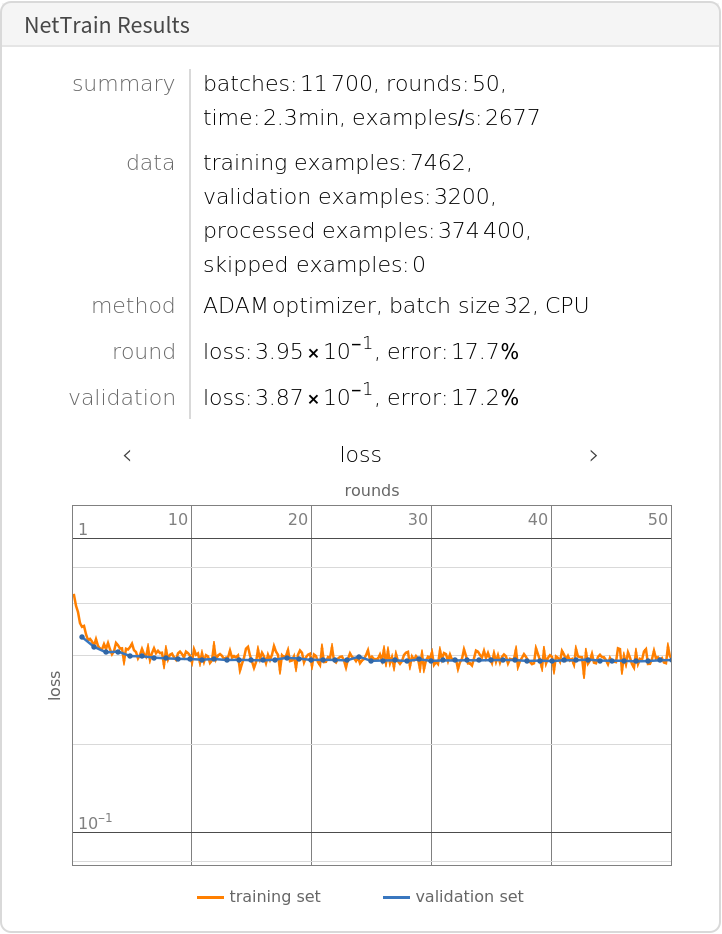
![trainembeddingsglove = NetModel["GloVe 300-Dimensional Word Vectors Trained on Wikipedia \
and Gigaword 5 Data"][train[[All, 1]], TargetDevice -> "CPU"] -> train[[All, 2]];
validembeddingsglove = NetModel["GloVe 300-Dimensional Word Vectors Trained on Wikipedia \
and Gigaword 5 Data"][valid[[All, 1]], TargetDevice -> "CPU"] -> valid[[All, 2]];](https://www.wolframcloud.com/obj/resourcesystem/images/6a3/6a390416-8cad-4884-8275-922180c519ee/6b27a334033a85e0.png)
![gloveresults = NetTrain[classifierhead, trainembeddingsglove, All,
ValidationSet -> validembeddingsglove,
TrainingStoppingCriterion -> <|"Criterion" -> "ErrorRate", "Patience" -> 50|>,
TargetDevice -> "CPU",
MaxTrainingRounds -> 50]](https://www.wolframcloud.com/obj/resourcesystem/images/6a3/6a390416-8cad-4884-8275-922180c519ee/33aab65c2dad94b9.png)
